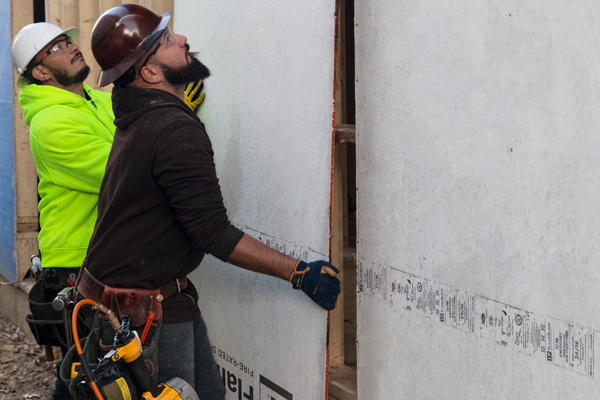Industry Trends5 min
Fire Factor by Risk Factor™: Calculating Fire Risk on Your Street
Warm, dry summertime weather is ideal for building houses, but these conditions can increase the likelihood of wildfires. As you may expect, California was ranked as the top wildfire-prone state in 2021 (2,233,666 acres burned), but the devastation of wildfires is also felt in mixed-humid areas like Missouri (40,262 acres burned), North Carolina (25,838 acres burned) and Mississippi (21,037 acres burned).
To offer greater support across the U.S., LP Structural Solutions is partnering with the First Street Foundation, which helps builders assess and protect against environmental threats from fire, flooding and wind. Let's dive into the First Street risks for fire and learn how to build for greater resiliency when the risk of fire is high.
What is Risk Factor From First Street?
Risk Factor® is an online assessment tool that makes it easy for builders and homeowners to understand environmental threats at an address level and to learn how risks can change with changing environmental threats.
What's different about this tool is that builders and homeowners enter a home's specific address to review current and future risks of a changing climate. You may not expect that a home in Missouri, for example, may be affected by wildfire, but if Risk Factor specifies that the fire risk for that address is high, the builder can take steps to mitigate those specific risks.
How Fire Factor by Risk Factor® Calculates Risks
The Fire Factor tool considers the vulnerability of the property’s building materials, distance to fire risk areas and potential burnable materials, like vegetation, to determine the risk of being impacted by wildfire, assigning the address a score ranging from 1 (minimal) to 10 (extreme).
An Integrated Approach to Fire Risk
When the risk from a potential wildfire is high, builders can consider incorporating preventative measures into the structure to help slow the spread of fire.
“If you’re building in an area prone to wildfires, it’s good practice to go beyond the minimum building code to add additional resilience in the structure,” says Scott Johnson, Construction Services Manager at LP.

LP FlameBlock Fire-Rated Sheathing is evaluated by ICC-ES, UL and Intertek as a component in fire-resistance-rated wall assemblies and fire-classified roof assemblies.
To learn more about LP FlameBlock sheathing’s design flexibility, visit the product page.
Continue Reading
Resiliency Solutions
5 minIntroducing LP® SmartSide® ExpertFinish® Naturals Collection™: Nature-Inspired Beauty Meets Engineered Performance
We’re excited to introduce the LP® SmartSide® ExpertFinish® Naturals Collection™, a bold new addition to our trusted line of engineered wood siding and trim that delivers the warmth and beauty of nature with the advanced protection and performance builders and homeowners expect.
Labor Solutions
5 minChoosing the Right LP® Structural Solutions Product for Your Build
When it comes to building strong, reliable, and high-performing structures, the materials you choose matter. At LP Building Solutions, we understand that every project, whether it's a single-family home or a multifamily development, requires structural components that meet your needs for strength, durability, and efficiency.
Sustainability Solutions
5 minBuilding a More Sustainable Future with LP Building Solutions
In today's world, sustainability is no longer just a buzzword, it's a blueprint for responsible living and smarter building. As the construction industry seeks ways to reduce its environmental footprint, LP Building Solutions is focused on providing innovative building materials for eco-conscious builders to help reshape what it means to build sustainably
News & Stories3 min
History of Partnership with Gary Sinise Foundation
The LP Foundation is a proud partner of the Gary Sinise Foundation, which supports wounded veterans in several ways. You can learn more about the LP Foundation here.